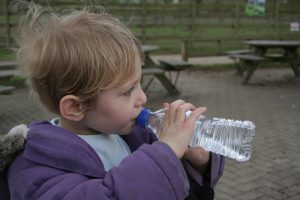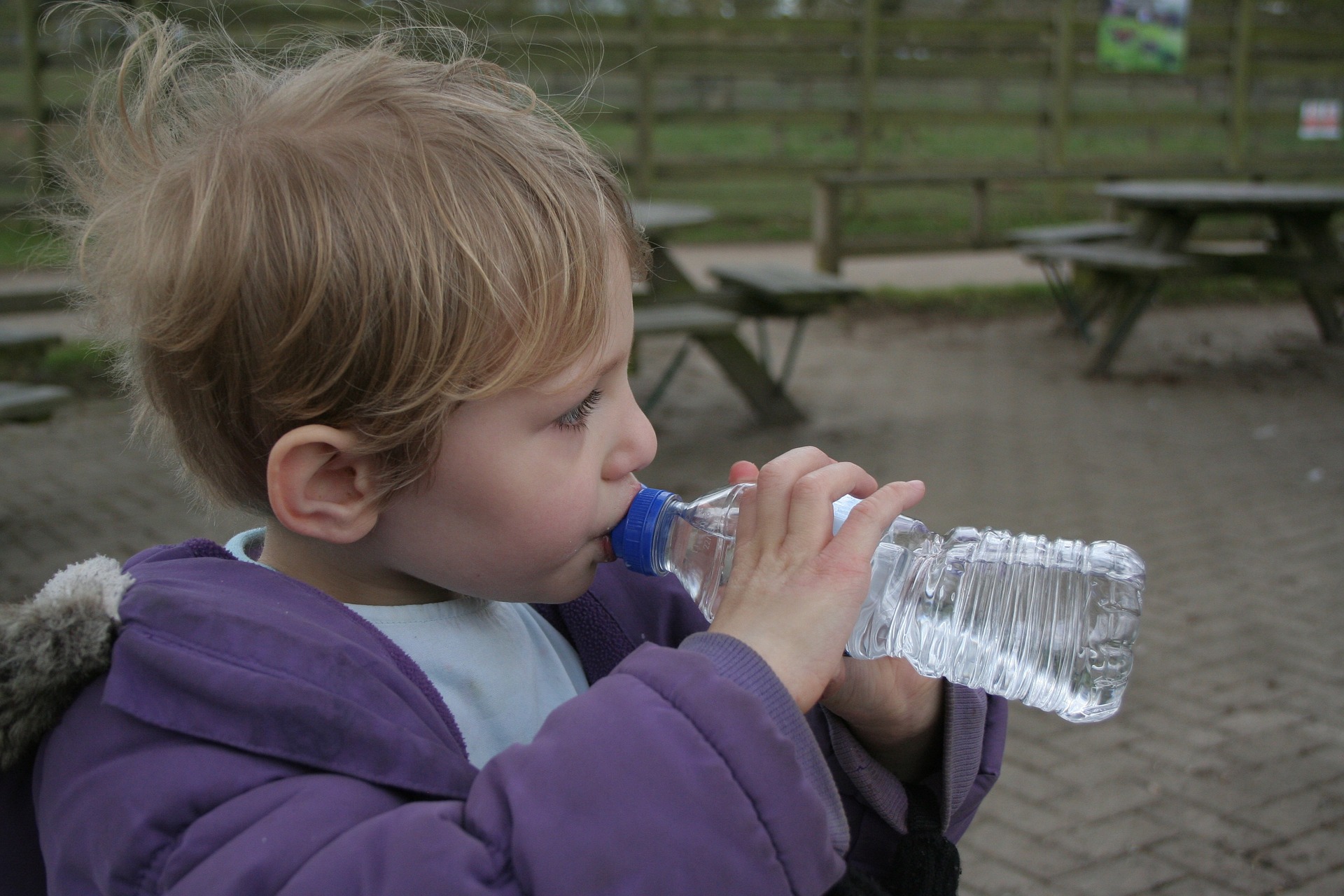 With a toddler, it can seem like there’s an endless list of things to worry about. We worry about whether they are eating enough nutritious foods or do they know not to talk to strangers. One of the concerns that isn’t usually at the top of that list is if your toddler is getting enough water. Drinking enough water is important for children to maintain proper hydration levels and their overall health.
With a toddler, it can seem like there’s an endless list of things to worry about. We worry about whether they are eating enough nutritious foods or do they know not to talk to strangers. One of the concerns that isn’t usually at the top of that list is if your toddler is getting enough water. Drinking enough water is important for children to maintain proper hydration levels and their overall health.
Water Guidelines for Children
So just how much water does a child need? The amount of water a child needs varies depending on their age. As toddlers, the number of cups of water they need corresponds with their age in years. After the age of 4, this changes and boys and girls start to need varying amounts of water because of the differences in their average weights.
| Age | Gender | 8 Ounce Cups of Water |
|---|---|---|
| 1 year | girls and boys | 1 cup per day |
| 2 years | girls and boys | 2 cups per day |
| 3 years | girls and boys | 3 cups per day |
| 4 to 8 years | girls and boys | 5 cups per day |
| 9 to 13 years | girls | 7 cups per day |
| 9 to 13 years | boys | 8 cups per day |
| 14 to 18 years | girls | 8 cups per day |
| 14 to 18 years | boys | 11 cups per day |
Why Does a Toddler Need Water?
Toddlers need water for the same reasons that adults need water. They may not be as active as adults, but their little bodies need water to function properly. Their bodies need water to bring nutrients and oxygen to cells. Water also helps the body regulate its temperature. Although there are other alternatives such as juice, electrolyte solutions, and soda, water is caffeine free, sugar free, and calorie free so it is a much healthier alternative to help children maintain proper weight.
How to Encourage Your Toddler to Drink More Water
With all of the marketing and advertising that goes into promoting sugary drinks, it may be hard to convince a toddler to drink more water. You can help encourage your toddler to drink water by making it fun. Try a cup with their favorite character printed on it. Add ice cubes in fun shapes. Use a silly straw. You can even make a game out of it.
Making Sure Your Water is Safe
With the abundance of bottled water and filter options that are available today, we sometimes take our water quality for granted. However, knowing what is in your water is an important part of keeping your child healthy. Whether your water comes from a private well or public source, all water is at risk for contaminants that can impact a toddler’s health.
Some of the contaminants that are frequently found in drinking water can cause damage to the small bodies of children while they are still developing. The reason that contaminated water poses more of a risk to children is that compared to adults, they weigh less so they absorb more water per pound of body weight. Because of their lower weight, the percentage of water pollutants ingested is greater which leads to higher risk. Common contaminants such as heavy metals and dangerous chemicals can build up to high levels in their bodies. Because their bodies are still growing, their organs and tissues are more susceptible to long-term damage and health issues.
Common Contaminants
Most contaminants are colorless, odorless, and tasteless, making them difficult to detect. Some of the contaminants that may be lurking in your water are:
- Lead: Water can absorb lead from older fixtures and plumbing. Lead levels that exceed 15ppb can pose a serious risk for toddlers.
- Pesticides: Pesticides applied to crop fields can be absorbed by the soil where they seep into water tables. Many pesticides have been linked to increased cancer rates and other health issues.
- Bacteria: Bacteria in drinking water can cause vomiting, nausea, fever, and diarrhea.
- Iron: Iron in the soil can be absorbed by rainwater and aquifers. It can affect the smell and taste of your water and may be dangerous to people who already have excessive amounts of iron in the body.
- Nitrates and Nitrites: Nitrates and nitrites are found in soil fertilizers and can contaminate drinking supplies. Nitrate levels should be under 10 parts per million and nitrite levels be under 1 part per million for safe drinking water.
- Chlorine: Chlorine is a safe disinfectant for water at certain levels. Any more than 4 parts per million increases the chance for health concerns.
- Copper: Safe levels of copper are below 1,300 parts per billion. Increased copper can cause stomach problems and organ damage.
The Importance of Water Testing
No matter what your water source is, testing is the only way to know what is in your water to make sure its safe for your toddler. There are professional testing companies that require you to mail samples and will return your results in days or weeks. A simple and economical alternative is home testing. TestAssured makes a complete testing kit that includes 10 water quality tests allowing you to quickly check your water with a complete analysis. You’ll have results for most tests in a matter of minutes and you can be confident in the safety and quality of the water you are providing your toddler.

